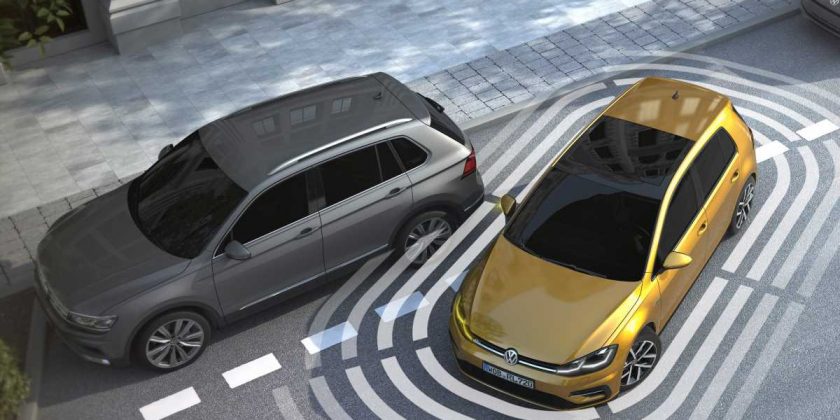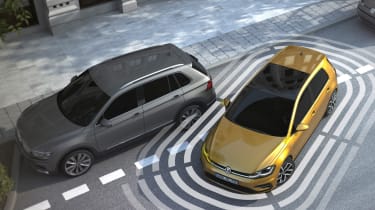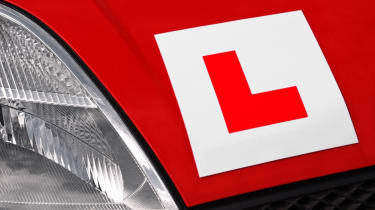With this simple technique and a bit of practice, anyone can pass the parallel parking test
Even some seasoned drivers find the idea of parallel parking daunting, yet it’s one of the most basic skills required by anyone who intends to travel by car to any city, town or village – at least if they want to stop and get out!
For just that reason it’s also one of the skills your examiner may ask you to demonstrate during your driving test, so it’s important to master the techniques and be able to execute them confidently.
As with all driving techniques practice makes perfect, so even if you’ve passed your test but still have confidence issues when it comes to parallel parking, just go out and find a quiet residential street where you can reverse into and drive out of a suitable space repeatedly without worrying too much about holding up the traffic.
Trust us, once you’ve got the hang of it you’ll wonder why you ever worried, and your new expertise should give you the confidence to tackle parking manoeuvres like a pro.
So read on, make sure you commit the proper technique to memory – especially important if you have to impress an examiner – and banish your parking parallel fears for good.
What is parallel parking?
Parallel parking is when you park the car parallel to the road, but for the purposes of the driving test it refers specifically to the technique of reversing into a relatively small space between two other ‘parallel parked’ cars. In other words, the sort of manoeuver you’ll have to employ routinely to get a space on almost every British street where parking is permitted.
Do I have to parallel park during my test?
For the driving test, parallel parking is one of three parking-related tasks you may be asked to perform, so you stand a pretty fair chance of having to do it. The other two tasks are reversing in or out of a parking bay, or reversing alongside the kerb for two car lengths on the right hand side of the road – the examiner can pick whichever one he or she fancies on the day.
If required to demonstrate your parallel parking skills, you’ll be asked to park in a space on the left hand side of the road that’s no longer than two car lengths. It’s admittedly one of the more complicated tasks in the driving test, but really shouldn’t cause you problems if you’ve practiced with your instructor.
The perfect parallel parking technique
Indicate as you approach your allotted space slowly and with caution, making sure you are aware of traffic and hazards all around as you slow to a halt alongside the space.
Size up the space to make sure you’ll fit – if it’s one-and-a-half times the length of your car that’s ideal, but you’ll want at least 2ft of clearance at either end of your car to make room for manoeuvring.
Maintaining close attention to surrounding traffic and/or pedestrians, and still indicating, move slowly forward until you’re level with the car parked in front of your space. You should leave a gap of approximately 1m between your two vehicles.
Stop, and take the opportunity to check your mirrors and blind-spot, and make this critical safety check obvious to the examiner by being sure to turn your head.
Engage reverse gear, look over your left shoulder to see out through the rear windscreen, and as long as it’s safe to proceed you can begin reversing.
Driving test ‘show me, tell me’ questions: top tips
When your tyres are in line with the rear end of the car you’re planning to park behind, prepare for turning the wheel by pausing the reverse and checking your mirrors and blind spot again for hazards. Some people advise applying the handbrake for this safety check, but either way it’s critical to make sure the examiner is confident you are in control of the car and have good all-round awareness.
Rotate the steering wheel one turn to the left and, if it’s safe, begin to reverse into the space while again looking over your shoulder through the rear window. You should now be entering the space at an angle of roughly 45 degrees, and the front of your car will have swung out wider into the road, During this manoeuvre take the opportunity again to glance all around the car to maintain hazard awareness, and keep checking the nearside mirror.
When the kerb is visible in the mirror, check your car is clear of the vehicle parked in front, and begin to straighten up in the space by applying full right hand steering lock as you continue to reverse slowly. This will swing the front of your car close to the kerb.
Straighten up while reversing by moving the wheel left or right as appropriate, and using the nearside mirror to help align your car neatly with the kerb.
Can you fail the driving test on parallel parking?
Don’t panic if your parallel parking manoeuvres don’t go perfectly to plan during your test. As long as the examiner is confident that you are on top of hazard awareness at all times and that you can stop reasonably close to the kerb, you are unlikely to be failed with a serious fault. Make a serious hash of the manoeuvre though, mount the kerb or show a major lack of control, and you could fail on this part of the test.
You can also pick up standard faults if you demonstrate a lack of accuracy – for instance by scuffing the kerb or having to reposition the car mid-manoeuvre. Tot up enough standard faults and you won’t be passed.
Now read about our other Practical driving test tips…
Source: Read Full Article



 Driving test ‘show me, tell me’ questions: top tips
Driving test ‘show me, tell me’ questions: top tips